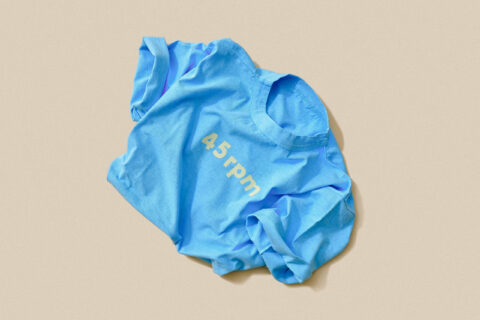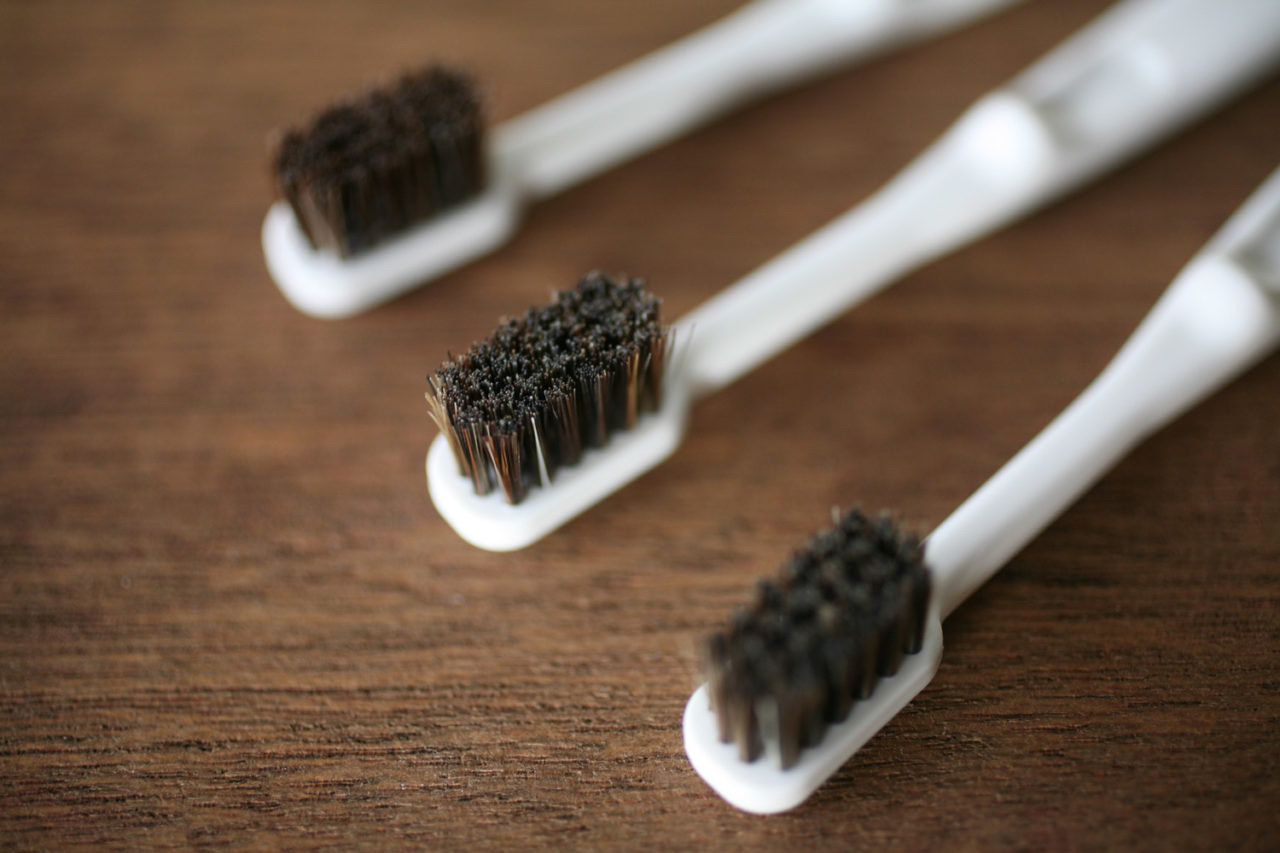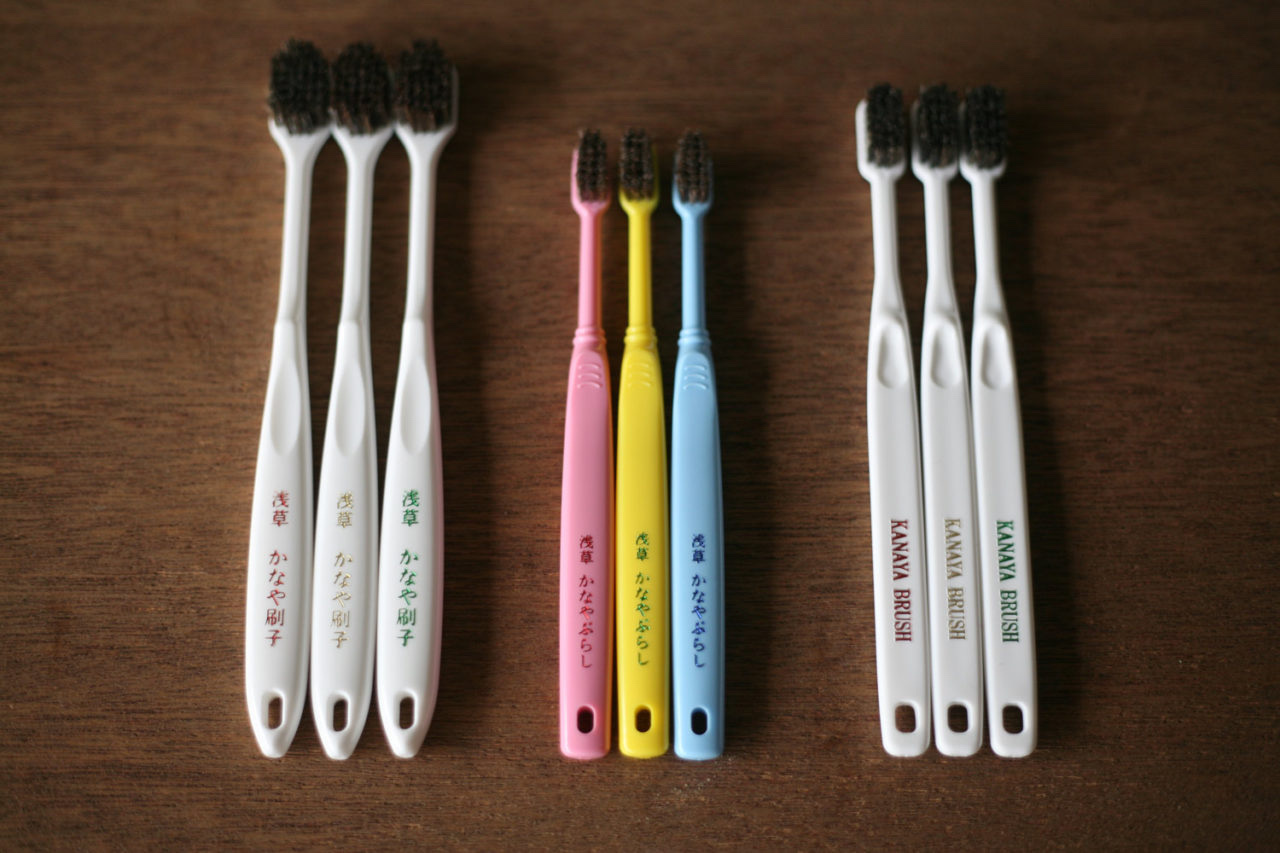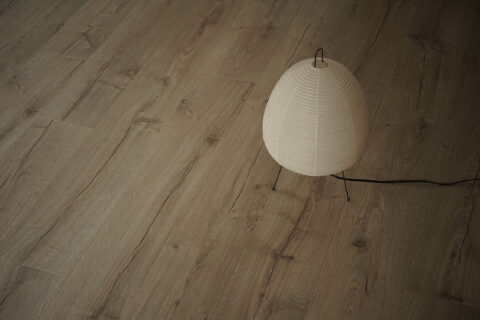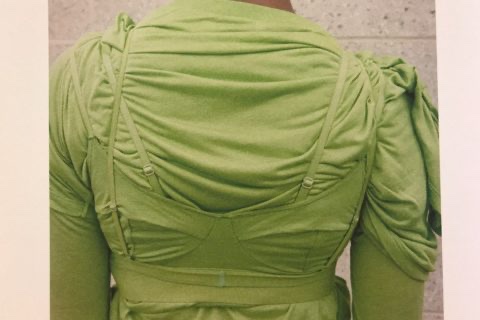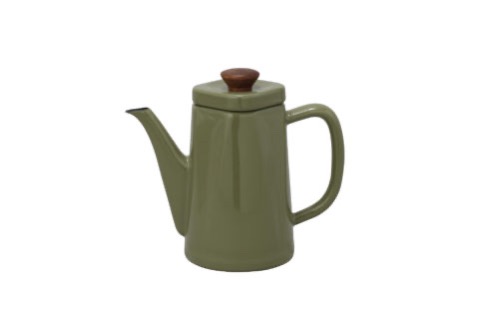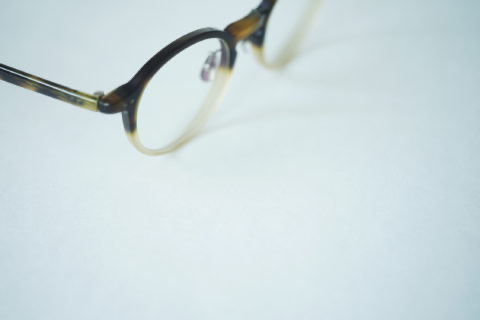就像遠古的人類們,都不約而同地學會生火的技巧,「牙刷」這項工具如是,不論那個民族都發明過類似的潔齒工具。說來現代牙刷的刷毛,主要都都用尼龍紗線,不過在古代時「類牙刷」的刷毛卻是五花百門,像阿拉伯人用過搗碎的樹枝、中國人用過豬的鬃毛和馬毛,也有一些民族是以動物骨頭、羽毛等清潔牙齒。
Early humans not only mastered the necessary skills to make fire, they also invented teeth-cleaning tools; and while we modern humans mainly use toothbrushes made with nylon bristles to clean our teeth, our ancestors were way more creative. The Arabs used twigs. The Chinese used little brushes with bristles made with pigs’ or horses’ hair. Animal bones and feathers were also used by early humans to maintain dental hygiene.
來自日本淺草的「金屋刷子」,有超過一百年的歷史,是從大正時代流傳下來的老店,生產各種由天然材料製作成的刷子工具,當中又以馬毛製作的牙刷最受歡迎,並號稱是「百萬人使用過的牙刷」。牙刷上的馬毛軟硬適中,並富有彈性,清潔時不僅毫不費力,同時還能用來按摩牙齦,避免牙齦老化、保持牙齦健康。照片上頭的三組牙刷,左右分別為大、小號牙刷,中間色彩繽紛,略小一號的自然是兒童專用版,都是簡約好看的款式。
而在牙刷之外,「金屋刷子」還有推出其他刷子過品,像是洗臉用的、洗澡用的、化妝用的,而甚至連按摩頭皮用的刷子也有在生產,總共推出了300多款的刷子;誠然基本上你能想像到的刷子,都能在「金屋刷子」的店裡找到,要說他們是一家「刷子博物館」也不為過。
Established in the Taisho era in Asakusa, Tokyo, Kanaya Brush has been producing brushes made of natural materials for more than 100 years. Among their vast variety of brushes, the toothbrush made of horsehair is the most sought-after item from the brand, and as such has been crowned the “million-selling toothbrush.” The horsehair bristles of this popular toothbrush are neither too hard, nor too soft. They feel comfortable and elastic on the teeth which makes them perfect for cleaning as well as preventing gum recession. The three sets of toothbrushes on the top left and right of the photo are in size large and small. Those colorful tiny ones at the bottom are for children. Regardless of color and size, they all look simple and beautiful.
In addition to toothbrushes, Kanaya Brush has over 300 other kinds of brushes that take care of almost every aspect of your cleaning and beauty routine. This includes items for face cleaning, bathing, makeup application, and even brushes for massaging the scalp. Basically all of the brushes you can imagine can be found in Kanaya. I suppose it’s not too much to call it a “brush museum”?
